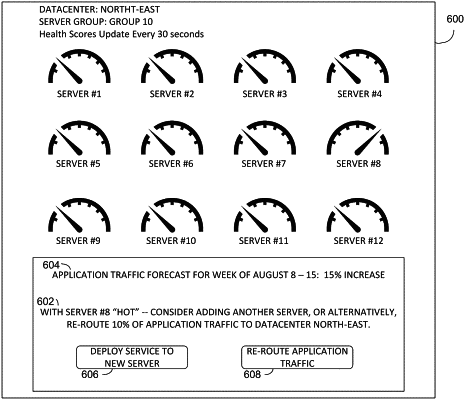| CPC H04L 43/067 (2013.01) [H04L 41/16 (2013.01); H04L 43/045 (2013.01); H04L 43/062 (2013.01)] | 20 Claims |

|
1. A computer-implemented method comprising:
for each server computer in a predefined group of server computers executing an instance of a first service, i) obtaining for the server computer a value for each of a plurality of utilization metrics, and ii) providing, as input features, the value of each of the plurality of utilization metrics to a first pre-trained machine learning model to derive, as output, a service-specific server health score for the server computer;
providing, as input features, a measure of application traffic processed by the predefined group of server computers for each of a plurality of prior time periods to a second pre-trained machine learning model to derive, as output, a measure of predicted application traffic to be received by the predefined group of server computers in a future time period;
processing one or more rules, by a rules-based engine, using as input to the rules-based engine the service-specific server health score for each server computer in the group of server computers executing the instance of the first service and the measure of predicted application traffic;
presenting, via a user interface, a recommendation relating to the future time period, the recommendation derived at least in part by a result of the processing of the one or more rules; and
receiving user input via the user interface to invoke an operation consistent with the recommendation relating to the future time period, the operation comprising one of:
configuration of the first service on one or more additional server computers;
termination and removal of the first service from one or more server computers; or
reconfiguration of application traffic routing to the predefined group of server computers.
|